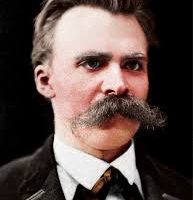
Let us consider the following questions: Can the modern world be conceived without photography? What is its contribution to preserving the memories and faces of history? How much of the past would we know without the art of photography? What were the driving forces behind its invention? Why and how has taking pictures become part of our daily lives? How many of us appreciate the magic of photography both as amusement and as art?
Most of us remember the excitement of our first photograph taken at a photographer’s shop in our younger years, long before the advent of modern cameras. That experience was remarkably magical. The next day, we returned to the shop, looked at our picture, and thought, “This must be the work of the devil or some invisible creature!”
When people encounter something new, they often attribute it to supernatural forces. This was the case when the cinema known as the “house of the devil” on Churchill Road opened during Emperor Menelik’s reign. Generally, anything unfamiliar or unimaginable is ascribed to either God or the devil. However, many of us might view photography and modern cameras as divine gifts, recreating in pictures what God has made in flesh.
You might conclude that such a magical feat as reproducing a picture was impossible for humans. Consider the impression you get when you see a magnified photograph displayed behind glass, inviting others to have their pictures taken and displayed similarly. You might feel like a movie star whose image graces the entrance of a cinema hall. This sense of wonder likely accompanied the first photograph taken when the art of photography was born.
It is now clear why photography is regarded as an art rather than merely a technology. According to conventional wisdom, photography is an art form akin to painting, relying on the talent and vision of the photographer, just as painting depends on the artist. In photography, much of the work is done by the camera, while in painting, the artist is the primary creator. This does not mean that photography is easier than painting; both have their unique challenges and opportunities. Photography primarily uses light to create images, whereas painters employ various mediums and techniques, including light and color.
A brief definition of photography is “the art and process of creating images by recording light, typically using a camera on light-sensitive or electronic image sensors.” It serves various purposes, including art, science, journalism, and personal expression. Historically, the first surviving photograph was created around 1826 or 1827.
The evolution of photography is an amazing process. The earliest cameras were bulky, crude, and made from simple materials. The first camera, the daguerreotype, was the first publicly available photographic process, widely used during the 1840s and 1850s. The history of the photographic camera spans from ancient camera obscuras to today’s digital devices. The earliest forms of photographic cameras appeared in the 1830s, while the first digital camera was invented in 1975.
At the time of its invention, the photographic camera was not widely available; only the elite had access to it. However, with technological advancements, cameras became accessible to the masses, who eagerly adopted them for various purposes. The invention of roll films, like those from Kodak, further democratized photography.
The uses of photographic cameras are diverse, ranging from capturing images and videos to creating digital content and monitoring environments. They are employed in photography, videography, media, entertainment, surveillance, and scientific research.
Photography also serves as a tool for documenting historical events, places, and processes, contributing to the political, economic, social, and artistic legacies of a country. It can document conditions before and after conservation treatments and capture social issues and historical events. Photography is a tool for scientific exploration, personal narratives, and professional fields like law and medicine.
As we can see, photography’s functions are broader and more diverse than we might anticipate. Photographic documentation is a form of art that encompasses all aspects of life. Documentary photography can accurately portray historical events and social realities, capturing them for posterity.
A good example is the role of photography in documenting the social and economic life of a city. Most of us may not know what Addis Ababa looked like during the reign of Emperor Menelik or Empress Taytu. We cannot reconstruct the city without imagination or historical readings. Fortunately, a few photographs capture not only the faces of that era but also scenes from old markets, the Ghibbi (imperial palace), and neighborhoods now lost to municipal development.
The Addis Ababa city authorities could have significantly served future residents by undertaking photographic documentation of important historical, political, and artistic sites before their demolition. Key landmarks should be preserved as heritage for future generations. Indiscriminate demolitions have undoubtedly damaged aspects that could have been salvaged for posterity. It is not too late to correct this oversight. As old neighborhoods face demolition and reconstruction, there remains an opportunity to use photography as a powerful tool for preserving the essence of old Addis for future generations.
Fifty or one hundred years from now, the present will become the past. The current features of the capital should also be documented photographically. These records can withstand the test of time, living on in our memories and in photographic archives long after we are gone
BY MULUGETA GUDETA
THE ETHIOPIAN HERALD SATURDAY 7 JUNE 2025





